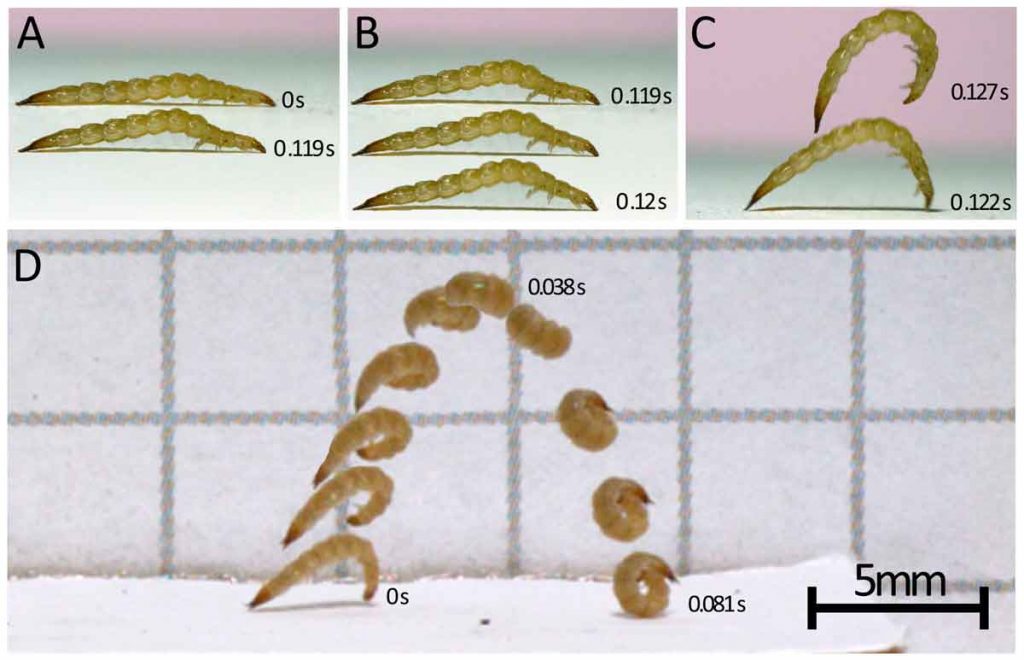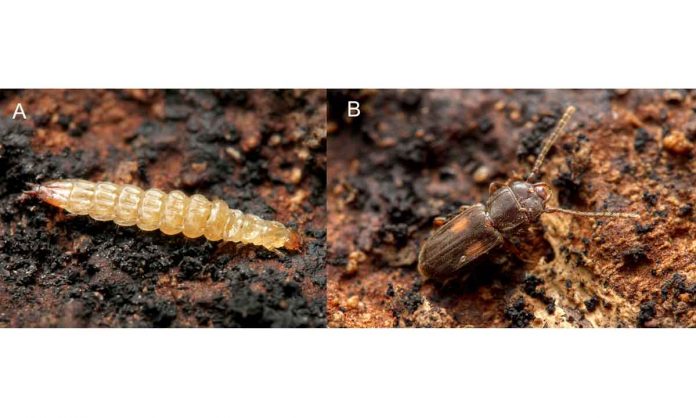Scientists discovered a jumping behaviour which is entirely new to insect larvae. There is evidence that it is occurring in a range of species.
This unrecorded behaviour happened in the larvae of a species of lined flat bark beetle. The larvae are able to spring into the air. Each larvae curled itself into a loop as it leaps forward. How the larvae are able to pull it off makes these leaps unique.
There is other insect species who are capable of making prodigious leaps. They depend on a “latch-mediated spring actuation mechanism”. They have two parts of their body latch onto each other while the insect exerts force. This builds a significant amount of energy. The insect unlatches the two parts and release all energy at once. This allows it to spring off the ground.

The discover was serendipitous. Scientists have collected a variety of insect samples from a rotting tree. Then they photograph them. They noticed these beetle larvae were hopping. Scientists filmed the behavior to get a better look at what was going on.
They wanted to determine how L. biguttatus was able to execute its acrobatics. Scientists filmed the jumps at speeds of up to 60,000 frames per second. They captured all of the external movements related with the jumps. They suggested that the legs were creating a latching mechanism with the ground.
Scientists conducted a muscle mass assessment to determine if it was possible for the larvae to make their leaps using just their muscles. They found that the larvae do not have sufficient muscle to hurl themselves into the air as far as they had been filmed jumping.
Scientists included a short clip of the jumping behavior in L. biguttatus. Other scientists have also witnessed similar jumps in the larvae of another beetle species called Placonotus testaceus.

